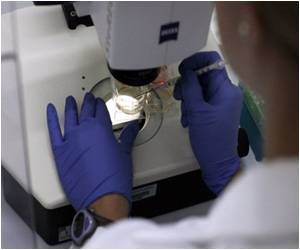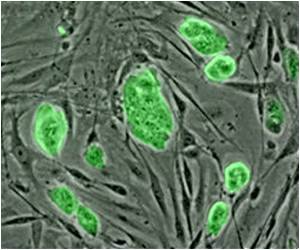A sensor pathway inside the cells that triggers septic shock has been identified by scientists.

"During the defense against an infection you want to be able to differentiate between the bacteria that stay on the outside of the cell and the ones that get inside," said senior study author Edward A. Miao, MD, PhD, assistant professor of microbiology and immunology. "You can think of the exterior sensors as a yellow alert; they tell us that bacteria are present. But these bacteria could either be simple ones in the wrong place, or very dangerous ones that could cause a serious infection. The interior sensors act as a red alert; they warn us that there are bacteria with ill intent that have the genetic capacity to invade and manipulate our cells."
The body responds to a bacterial infection by increasing blood vessel permeability near the area under attack, which allows immune system cells to leave the bloodstream and seek and destroy the bacteria. Fluid also leaks into the area surrounding the infection, causing characteristic swelling. This is beneficial in fighting infection, but when the infection gets out of hand and these immune response occur throughout the body, blood pressure plummets, overtaxing the heart and leading to organ failure and often death. This increasingly prevalent syndrome, known as septic shock, afflicts over 750,000 people each year in the United States at a cost of nearly $17 billion.
About half of the cases of septic shock are caused by bacteria that produce LPS, also known as endotoxin. In fact, much of what is known about endotoxic shock comes from studying animals injected with high doses of LPS. For example, previous studies pinpointed the role of the Toll-like receptor 4 gene (TLR4) as a sensor on the outside of cells; mice without that gene resisted endotoxic shock.
In a study published in January 2013, also in the journal Science, Miao and his colleagues showed that a sensor called caspase-11 sounds an alert when bacteria enter a cell. However, it wasn't clear which of the thousands of molecules that make up a bacterial cell triggers that new sensor.
In the current study, Miao and his colleagues investigated which bits of foreign material were being detected. They took apart and delivered different chunks of bacteria into the cytoplasmic compartment inside the cell. To their surprise, they found that the caspase-11 sensor inside the cell was detecting the same molecule, LPS, as the TLR4 sensor outside the cell. The researchers wondered whether there was a link between these two sensors.
Advertisement
Miao says that figuring out how these two sensors get activated in response to a bacterial infection could help researchers develop new ways of preventing or treating septic shock, a condition that kills about half its victims.
Advertisement
Source-Eurekalert









